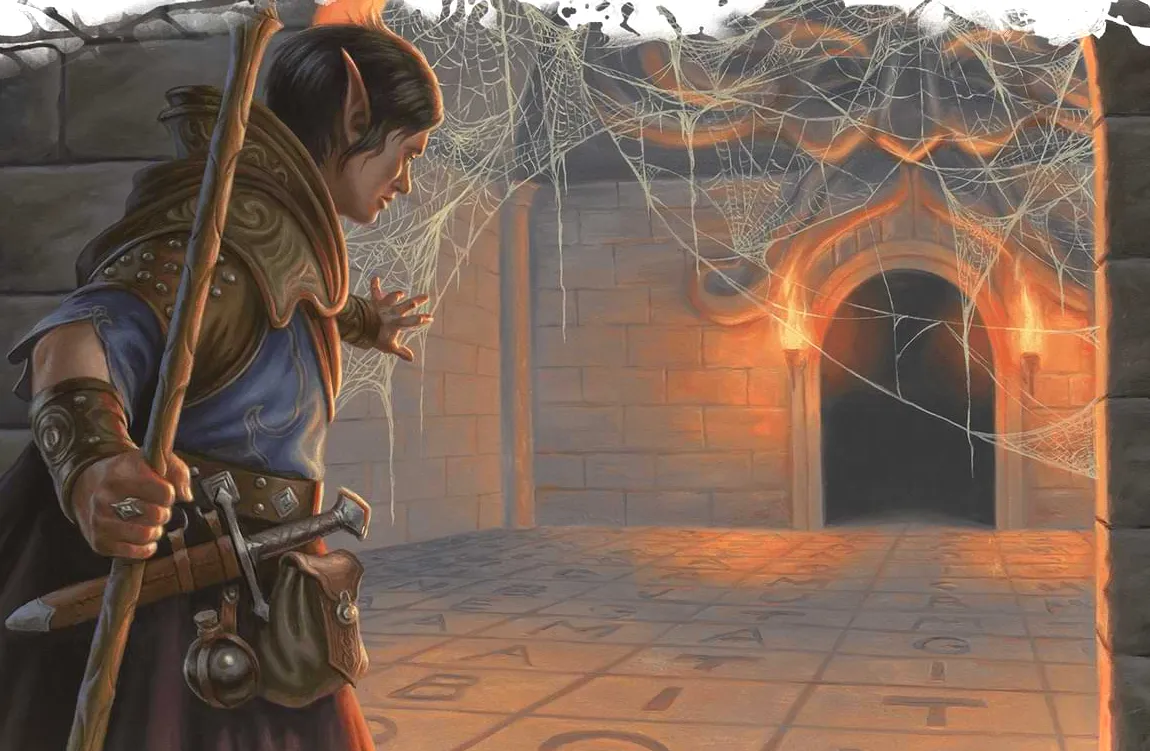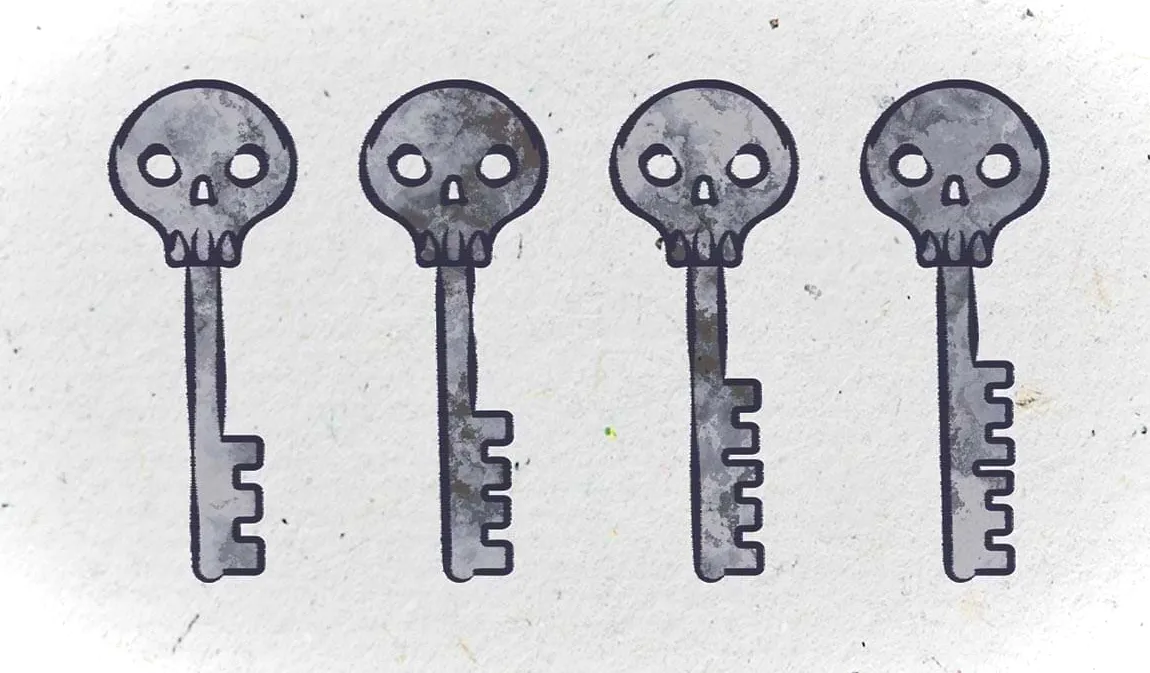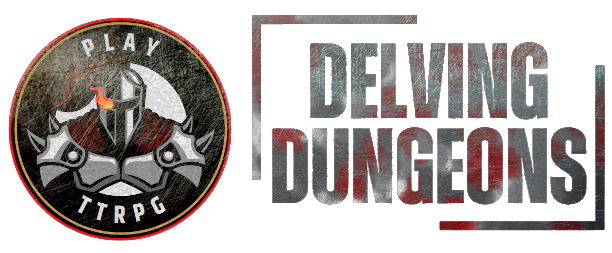Deborah Ann Woll comparte consejos para incorporar rompecabezas en tu juego de D&D
Incorporar con éxito acertijos en tu juego es algo con lo que muchos Dungeon Masters luchan. ¿Qué tan difícil haces el rompecabezas? ¿Qué haces si los jugadores se atascan? Tasha’s Cauldron of Everything proporciona acertijos que puedes incluir en tu juego, pero ¿qué pasa si quieres crear un rompecabezas personalizado que se ajuste a tu campaña?
Contratamos a la DM experta y la reconocida mente maestra de rompecabezas Deborah Ann Woll (ella/ella) para que nos diera algunos de sus mejores consejos sobre cómo ejecutar rompecabezas en Dungeons Dragons. Deborah es conocida por interpretar a Karen Page en las series Daredevil , The Defenders y The Punisher de Marvel , así como a Jessica Hamby en True Blood de HBO . También es un miembro muy conocido de la comunidad de DD. Por lo general, se la puede encontrar enviando mensajes directos a juegos de alto perfil para Wizards of the Coast o Geek and Sundry y ha sido estrella invitada en la segunda temporada de Critical Role .
Aquellos que han visto a Deborah jugar como DM saben que es experta en incluir acertijos que invitan a la reflexión en sus juegos. Entonces, ¿qué información sobre cómo ejecutar acertijos en DD tiene Deborah para compartir con nosotros? ¡Descúbrelo a continuación!
- Mira la entrevista
- Aprende los fundamentos de los rompecabezas.
- Ten formas de ayudar a tus jugadores si se atascan
- leer la habitacion
- Haz que la recompensa valga el esfuerzo
- Robar ideas descaradamente
- Usa accesorios para mejorar tu juego
Ver: Deborah Ann Woll sobre la creación de rompecabezas
Aprende los fundamentos de los rompecabezas.
Agregar acertijos a DD puede ser una tarea desalentadora y, con tanta creatividad requerida, puede resultar difícil saber por dónde empezar. Deborah sugiere aprender primero los fundamentos de la creación de rompecabezas. Los criptógrafos, el código morse, las cifras y los acertijos son excelentes acertijos fundamentales para usar en DD. Se pueden aplicar universalmente a cualquier tema, ya sea que estés en la tumba de un antiguo liche o en la torre de un mago.
“Lo mejor de los rompecabezas, como los de DD, es que sólo tienen unas pocas mecánicas básicas. Digamos que hay una docena de mecánicas básicas de rompecabezas. Puedes disfrazarlos y ponerlos en capas”, dijo Deborah.
Once you grasp these foundational puzzles, you can stack them on top of one another to create unique experiences each time they’re used. “Generally [advanced puzzle building] is a two-step process. [For example] you get the code by solving a riddle, but the riddle has gone through an alphabet cipher,” Deborah explains.
Once you understand foundational puzzles, you’ll be able to mix and match them to create unique, rewarding experiences for your players time and time again!
Have ways to help your players if they get stuck
Deborah expresses how imperative it is that puzzles are used to build your players up, not knock them down. “Puzzles are not about making your players feel stupid. It should be the opposite. It should be giving an opportunity for your players to feel really smart,” Deborah stressed.
That can be harder said than done. DMs who have run puzzles in the past can usually commiserate with the stomach-dropping feeling when your party decides, “This is too hard, let’s find another way.”
Deborah expands on two methods that can be used to help mitigate players avoiding your puzzles. The first is providing more hints than necessary, so even if your players don’t find all the clues, they have an idea of what to do. “You don’t want your puzzle to be so opaque that there is no way to get it. I always have layers upon layers upon layers of clues, and often, my party won’t find them all,” Deborah stated.
The second method is providing different levels of hints based on checks made while attempting to solve the puzzle. Deborah’s approach is always to give a hint when players make Intelligence or Investigation checks but “a higher roll results in a better hint.”
At the end of the day, it’s essential to make your players feel like they were the ones to solve the puzzle. “I want people to feel like they figured [the puzzle] out. If they got a little bit of help, there’s no shame in that,” Deborah emphasized.
Read the room

Not everyone loves puzzles. This is a hard truth that DMs looking to work puzzles into their game may need to come to grips with. Not everyone’s brain is wired the same, so when you’re looking to incorporate puzzles in your game, it might be worth it to ask whether or not your party will enjoy them.
“Generally, I try to keep puzzles relatively straightforward, unless I’m playing with a group that loves them. If I’m playing with a group that loves them, I’ll layer a cipher on a mechanical puzzle, something like that,” Deborah said.
That’s all well and good if you have a party with a uniform opinion on puzzles. But what if you have a couple of players that love puzzles and a couple of players that can’t stand them?
“If it looks like one or two people are going to dominate the puzzle, and then the others are not as interested, I might engage the disinterested players by saying, ‘You hear a creak from outside the door.’ So while the interested players are working on the puzzle, the other players have something to go investigate,” Deborah said.
While players may be hesitant to split the party, citing the age-old adage “Don’t split the party,” Deborah is starting to think that this may be an outdated way of thinking. “Look, I’m never going to TPK (total party kill) you for making a great creative decision. If you feel that this is a good opportunity to get two things done at once, don’t feel beholden to that adage,” Deborah tells her players.
Make the reward worth the effort
Puzzles should be a treat for your players. The party should get excited when you start describing symbols carved into the wall or a hidden note with a riddle inscribed on it. The best way to procure this excitement is to provide a suitable reward when the players go through solving a puzzle. “Your puzzle should be hiding something really cool. It shouldn’t just be the door to get into the house. The reward should make the puzzle worth it to go through,” Deborah emphasized.
Once you’ve taught your players that puzzles can lead to significant rewards, you can start to defy their expectations to build tensions and create rivalries with NPCs. To be especially cruel to her party, Deborah has even done puzzles “where it hides nothing, except a note that says ‘Haha, I got here first.’”
Shamelessly steal ideas
Coming up with your own puzzles requires a significant time investment, even for pros like Deborah. Her advice? “Buy the Nancy Drew video games.” These point-and-click video games put you in a first-person view of the famous detective as she solves puzzles to uncover clues and unravel mysteries. With 32 games available, there is a large selection of puzzles to spark inspiration. Deborah recommends the following three stories:
- Ghost of Thorton Hall
- Shadow at the Water’s Edge
- The Shattered Medallion
You can also repurpose puzzles from published DD adventures or from the dozen or so premade puzzles inTasha’s Cauldron of Everything.If you choose to go a different route for inspiration and search online, or if you come across a perfect puzzle by accident when playing another game, there’s no shame in retooling it for your campaign. “Especially if it’s not a streamed or paid-for game, steal stuff from the internet,” Deborah emphasized.
Use props to up your game

Making physical props is a surefire way to take your DD puzzles to the next level. Deborah has handmade a myriad of different physical puzzles for her DD games. Ranging from card stock cryptexes to engineered wooden blocks that only stack in a particular order, Deborah suggests that these physical puzzles intrinsically reward the players forsolving them.
“A puzzle with an inherent reward is the best kind of puzzle to make,” Deborah said.
The props you bring to your games don’t have to be physical puzzles with moving parts to elicit a great response from players. “Put a fancy border around a piece of parchment paper, and you can type it too. I don’t have great handwriting, but there are calligraphy fonts on basic word processors. I’ve done the whole thing where I’ve burnt the edges of the paper, I’ve soaked it in tea, and I’ve crumpled it up,” Deborah said.
Sheemphasizes that the most important thing when it comes to building props for your DD games is that it is “in your interest wheelhouse already. It should be fun, not a chore.”
Exandria Unlimited’s Anjali Bhimani on the Magic of DDby Jeremy Blum 8 DD World Building Tips From Lou Anders and Travis Vengroff by Bryce Miller-Booker Exploring Romance in DD—Without Making Others Uncomfortableby Riley Silverman
Mike Bernier (@arcane_eye) is the founder ofArcane Eye, a site focused on providing useful tips and tricks to all those involved in the world of DD. Outside of writing for Arcane Eye, Mike spends most of his time playing games, hiking with his girlfriend, and tending the veritable jungle of houseplants that have invaded his house.

Deja un comentario